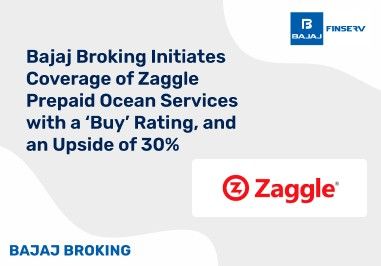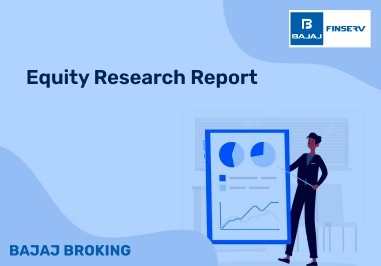SEBI introduced this Greenshoe Option or overallotment of share clause in India in 2003. With this option, underwriters and IPO issuers can ensure that their share prices stay stable after the initial share sale.
Read this blog till the end to know what is the Greenshoe option, its types, guidelines and benefits.
What is Greenshoe Option?
The Greenshoe option is a provision in an IPO agreement that grants underwriters the ability to sell up to 15% more shares than originally planned. This mechanism, also referred to as the overallotment option, is employed to stabilize the stock price after the IPO. In cases of high demand, underwriters can issue additional shares at the offer price, preventing a sharp rise in stock prices. Alternatively, when demand falls and prices decrease, underwriters buy back shares from the market to reduce supply, thus preventing further declines. First introduced in the U.S. in the 1960s, this option was adopted by SEBI in India in 2003, making it a critical tool for price stability and providing more confidence to investors in volatile markets. This option is particularly useful in ensuring IPO price stabilization and fostering greater investor confidence.
The Greenshoe option is also called the overallotment option. This is a provision in an IPO underwriting agreement which enables issuers to sell additional shares over an IPO or as a follow-on offering. The Greenshoe option works pretty much like a risk management system for an IPO issuing company.
This option clause looks into the overallotment of shares at the offer price in instances of high demand for shares. This option also lets an IPO issuing company buy back shares if there is an excessive supply. This is a necessary measure that companies take to avoid any major drop in their target share prices. Underwriters work to stabilise stock prices when they show signs of volatility.
Conversely, if share prices move up sharply, underwriters may execute a Greenshoe option to buy shares from an issuing company and sell them to their customers. This will help to meet excess demand and increase the stock’s market liquidity.
How Does a Greenshoe Option Work?
Now that you know about the meaning of Greenshoe option, let’s take a look at how it works.
With a Greenshoe option, underwriters involved in an IPO can support its market price upon launch, preventing it from falling. Underwriters can usually short up to 15% of the issuers’ shares. They do so in exchange for certain fees or commissions that the IPO issuing company must pay to underwriters as per their agreement.
If the share prices of this company fall, underwriters will become active and buy back these shares from the market and cover their short position. This decreases the supply of shares and its price increases due to buyback. It also increases the demand for shares among investors and ensures that the share price stays above its issue price.
Let’s assume a scenario where this share price increases. In such a situation, underwriters will buy 15% additional shares from the issuer at the offer price. This will help the underwriter to cover its position without incurring major losses.
As an investor, you will also stand to benefit from an IPO issue that executes a Greenshoe option. With it, you have some assurance of price stability post-listing. This facility is not available for an IPO without a Greenshoe option.
Additional read: Red Herring Prospectus
Greenshoe Option in Action
The green shoe option is a vital mechanism for stabilising stock prices during an IPO. It empowers underwriters to manage market dynamics efficiently, ensuring a smooth transition for newly listed securities.
When a company goes public, the underwriters assess market demand and distribute the newly issued shares accordingly. In cases of oversubscription, underwriters can exercise the green shoe option, allowing them to purchase additional shares from the issuer at the offering price. This ensures sufficient supply to meet the heightened demand, preventing excessive volatility.
By deploying the green shoe option, underwriters stabilise stock prices during the critical early trading days of an IPO. They achieve this by selling the additional shares in the market, balancing supply and demand while minimising erratic price fluctuations. This intervention fosters investor confidence in the newly listed stock.
In contrast, if demand for the shares declines post-IPO, underwriters may repurchase shares in the market to avoid sharp price drops. This aspect of the green shoe option meaning highlights its role as a tool for mitigating risk and ensuring orderly market operations.
It underscores its importance in addressing unpredictable market conditions, providing stability and reassurance to both issuers and investors. Its successful implementation demonstrates its value in enhancing the efficiency and reliability of the IPO process.
Examples of Greenshoe Option
Alibaba Group Holding Limited (BABA)
In September 2014, Alibaba exercised its green shoe option, issuing an additional 48 million shares to meet immense demand. This move stabilised stock prices during volatile trading conditions, raising ₹21,290 crore.
Facebook, Inc. (FB)
In May 2012, Facebook’s IPO utilised the green shoe option, issuing 63.2 million additional shares. The underwriters sold these shares, ensuring price stability amidst high volatility and raising ₹30,570 crore.
Uber Technologies, Inc. (UBER)
During Uber’s May 2019 IPO, the green shoe option was exercised, adding 27 million shares to the offering. This approach helped stabilise Uber’s stock price during its turbulent early trading days.
Greenshoe Share Options Importance
The green shoe option is essential for ensuring a successful IPO. By stabilising stock prices and meeting market demand, it supports underwriters, issuers, and investors throughout the IPO process.
Price Stabilisation
The green shoe option enables underwriters to stabilise stock prices by managing supply-demand mismatches. This prevents steep price drops and builds investor confidence in the new stock.
Increased Demand
Through the green shoe option, additional shares can be issued to meet high demand. This ensures investor interest is satisfied without causing price surges or shortages.
Flexibility
The green shoe option meaning extends flexibility to underwriters. They can cover short positions or adapt to market fluctuations, ensuring efficient IPO management.
Risk Management
The green shoe option mitigates underwriters’ risk of unsold shares or excessive volatility, offering a safety net during unpredictable market conditions.
Here are a few guidelines that a company needs to abide by when exercising a Greenshoe Option.
- An IPO issuing company can only lend 15% of the entire offer amount.
- Companies can implement this Greenshoe option only within 30 days of its IPO date.
- Underwriters can execute this option in part or whole. This depends on the underlying stock’s price movement around its offer price. The underwriter can also acquire part or all of their allotted shares with a Greenshoe option.
Types of greenshoe options?
There are three main types of Greenshoe options that underwriters can use to manage the price and demand of shares after an IPO. The first is the Full Greenshoe Option, where underwriters purchase the full 15% of additional shares from the issuing company at the offer price to stabilize demand. The Partial Greenshoe Option allows underwriters to buy only a portion of the additional shares, providing flexibility in responding to market conditions. Finally, the Reverse Greenshoe Option enables underwriters to sell shares back to the issuing company if demand decreases, thereby stabilizing falling prices. Each option plays a crucial role in controlling price volatility and ensuring a balanced IPO market.
An underwriter can exercise three types of Greenshoe options. The points below will take you through the three types of Greenshoe options.
As the name suggests, by implementing this Greenshoe option, underwriters can buy some shares from a single lot before the prices increase. At times of shortage, underwriters can approach the issuing company to buy back its remaining shares at the offer price.
With this option, underwriters buy 15% additional shares from the IPO issuing company. Underwriters can buy these shares at an offer price. They usually opt for the full Greenshoe option in case they are unable to buy back shares before the price rises.
Underwriters can use this option to sell additional shares back to the IPO issuing company after buying them from the market. They opt for this option when the demand for IPO falls or the prices become volatile.
How Greenshoe Options in IPOs Benefit Investors and Companies?
The points below highlight some essential benefits of a Greenshoe option in an IPO.
- To Cater to High Demand for an IPO
When demand for IPO shares is high among investors, underwriters can exercise the Greenshoe option. This happens when an established company goes public, reflecting high demand for its shares in the market.
- Helps with Price Stabilisation
After a company launches an IPO, underwriters check if the prices of already purchased IPO shares do not fall below its offer price. If this price falls, it reflects a decrease in market demand. This is harmful to a company’s reputation among investors in the long run.
It is here that underwriters come into play. They start buying a portion of IPO shares from a different bank account. This creates a shortage of shares and tends to increase demand owing to the Greenshoe clause of the underwriters’ agreement. With this measure, underwriters try to lower the chances of share prices from falling and maintain stability.
- Chances of Selling Prices to Go Above Offer Price
If the demand for IPO shares is high, the price of IPO shares will increase as well. In such a scenario, the company will suffer a loss if underwriters purchase the shares. Therefore, they can use the Greenshoe option and buy the additional shares at the initial offer price.
Also Read: Lock-In Period in IPOs
Examples of Greenshoe Option
Several prominent companies have utilized the Greenshoe option to ensure the success of their IPOs. For instance, in 2019, Uber implemented a full Greenshoe option during its IPO to stabilize its share price amidst market volatility. The underwriters exercised their right to buy additional shares, maintaining the price around the offer value. Similarly, Alibaba’s IPO in 2014, one of the largest ever, saw the underwriters execute a Greenshoe option to manage the high demand for shares, helping to smooth price fluctuations. These examples highlight the Greenshoe option as a critical tool for maintaining price stability in high-demand scenarios, ensuring that both investors and issuers benefit from a balanced market environment.
Summary
To conclude, the Greenshoe Option in IPO is beneficial for both investors and IPO issuers. This option saves investors from facing major losses owing to a decrease in share prices after buying them.
Like every equity investment, IPO investments also come with certain risks. Therefore, you should thoroughly read the DRHP and plan an informed investment strategy. If you are a novice investor, consider seeking guidance from a financial expert.













